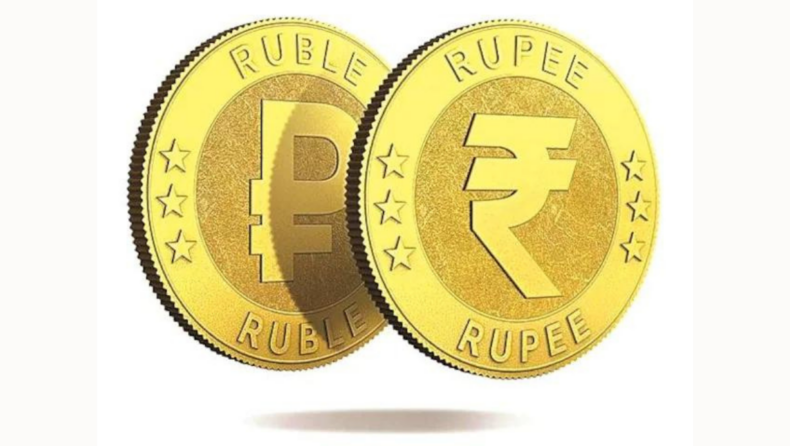The United States, the United Kingdom, and the European Union put sanctions on Russia after the Putin-led coup invaded Ukraine, and the Ruble is now a low-value currency versus the dollar and the euro.
After being prevented from accessing the international financial messaging system, Russia requires a new cross-border payment strategy.
According to persons familiar with the situation, India’s government is contemplating a proposal from Russia to utilize a system designed by the Russian central bank for bilateral payments as it wants to buy oil and weaponry from the sanctions-hit country.
The concept entails rupee-rouble payments via Russia’s System for Transfer of Financial Messages (SPFS), according to the persons, who asked not to be identified since the discussions are private.
There has been no final decision, and the topic will most likely be reviewed when Russian Foreign Minister Sergey Lavrov arrives in India on Thursday for a two-day visit.
“Such sanctions imposed have no effect on account opening, account maintenance, or serving clients from Indian credit institutions,” Moscow wrote.
Officials from Russia’s central bank are expected to visit India next week to discuss the details, according to the sources.
According to another insider, the Reserve Bank of India meets with executives from India’s banking sector on a regular basis to discuss issues such as the country’s exposure to Russia and the potential of sanctions.
Due to its reliance on Russian arms and the chance of purchasing cheaper oil when global prices rise, India is eager to sustain bilateral trade.
The administration of Prime Minister Narendra Modi has been defying Western pressure by claiming that weaponry purchases from Russia are necessary to confront China’s growing military aggression.
How will this work?
According to one of the persons familiar with the trade talk, rubles will be put in an Indian bank and turned into rupees, and the same procedure would function in reverse.
However, fluctuations in the currency of the ruble may make determining exchange rates more complex. The exchange rate, therefore will be fixed or floating, which is still up in the air.
The rupees would be exchanged for renminbi at a Chinese bank branch in India by the Russian bank. Russians can use renminbi instead of rupees. Meanwhile, because it is not subject to restrictions, the Chinese bank can use the rupees to purchase dollars.
After Visa Inc. and Mastercard Inc. ceased operations, Russia wants India to link its Unified Payments Interface with its MIR payments system to allow smooth use of cards issued by Indian and Russian banks, according to one of the sources.
About Lavrov’s India visit
Since Vladimir Putin’s onslaught on Ukraine, Lavrov’s visit would be the highest-level visit from Moscow. The foreign minister is presently in China, where he is attending consultations on measures to help Afghanistan organized by Moscow’s important partner.

India’s External Affairs Minister Subrahmanyam Jaishankar and National Security Adviser Ajit Doval are slated to meet with Lavrov.
When China’s Foreign Minister Wang Yi visited India a week ago, he met with the same two Indian officials.
Where does Indo-Russian trade stand?
In 2021, India exported $3.3 billion worth of commodities to Russia, primarily pharmaceuticals, tea, and coffee. Defense items, mineral resources, fertilizers, metals, and precious stones were among the $6.9 billion worth of imports.
According to reports, India could import close to 2 million tonnes of crude oil from Russia in 2022, or roughly 15 million barrels.
Published By: Manan Khurana
Edited By: Subbuthai Padma













